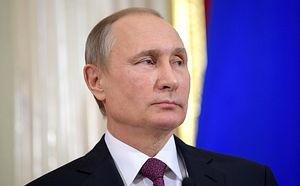While the Trump administration’s “Free and Open Indo-Pacific Strategy” seems to be still in the early stages of conceptualization, it is likely to soon become one of the defining factors for security in Asia, matched in significance only by persisting Chinese assertiveness. Russia has long sought great-power status and that has manifested in growing interest toward the Asia Pacific, where it seeks to participate in regional security issues and intends to find additional growth sources for a lagging economy. What will the implementation of the Indo-Pacific strategy and a revival of the Quad – closely associated with it – mean for Russia and its interests?
If the Indo-Pacific strategy means more robust coordination between the “maritime democracies” of the region, an investment in interoperability, and more pushback to growing Chinese control over the sea lanes of communication (SLOCs), then this will lead to further shifting of the arena of strategic great- and middle-power competition into the southern seas. This means that the vast landmass of Eurasia may get a chance to enjoy a relative decline in U.S. interest. China’s activity, however, is sure to grow along the lines of the Belt and Road Initiative. On the first look, this may be good news for Russia and its relationship with China is blossoming.
At the same time, Russia’s eastward policy is closely tied to its Eurasian self-identification and seeks to present the “Russian offer” bundled together with the Eurasian Economic Union (EAEU). Moscow has framed this in the Greater Eurasian Partnership initiative – an attempt to link the various mechanisms, agreements, and partnerships with Russia’s broader western, southern, and eastern neighborhoods in a single, albeit loose, patchwork. In this sense, a focus on the southern seas and especially an emergence of a Quad-led connectivity plan could create more pressure on Russia to show the smaller and middle powers of the region what are the actual benefits of opting for a Russia- and/or China-led format. And unlike China, Russia does not have any excessive capacity lying around.
If the U.S.-Japan-India-Australia nonalliance – a key element of the Indo-Pacific strategy – comes to fruition, Russia may see a decline in the value of an asset it has been at least verbally investing in for some time – the regional multilateral security architecture. Though the Indo-Pacific strategy purports not to exclude any country, it certainly does so. And though the Quad purports not to be aimed at containing China, it certainly does so. Moreover, both concepts clearly seek to attract support from middle and small powers of the region and if they do, this may serve as a signal of the inability of existing multilateral security mechanisms to provide regional security and a working framework for mutual accommodation to the shifting balance of power.
Russia’s support of the traditional ASEAN-centered multilateral security framework in Asia has been a key element of the country’s position precisely because Russia has neither the will nor the capability to provide security in the region by other means – strong military presence or meaningful economic interdependence. If the Quad happens, Russia will be pushed to commit more hard power and more economic power to Asia, thus putting a strain on its resources, or otherwise risk irrelevance.
Dwelling more on the fact that the Indo-Pacific strategy is not an accommodation strategy, but one of containment, the region is likely to see a heightening of tensions. China is sure to find itself under more pressure and feel a deeper sense of encirclement, thus becoming more active in influence operations in its neighborhood and strengthening control over its geographic periphery. This may mean more provocations and pressure on Vietnam, Russia’s key partner in ASEAN. The key long-term risk is that the increasing tensions result in China’s will to “cash in” the warm relationship between Russia and China and ask for reciprocal support in exchange for that demonstrated to Russia.
Finally, the success of the Indo-Pacific strategy relies greatly on India’s willingness to engage. For Russia, the risk of “losing” India – now a privileged partner – has never been so high. Therefore, if India chooses to go with the Indo-Pacific flow Russia may see its relationship with India deteriorate even further, with arms trade cooperation decreasing and strategic interests gradually misaligning.
All of this means that Russia is likely to be very critical toward the Indo-Pacific strategy and idea of a renewed Quad. This has to do not only with the “hostile” origin of the concept, but also with the threat it creates to Russian interests in Asia. More importantly, Russia’s diplomatic siege by Western countries and its indispensable partnership with China mean that Moscow will feel obliged to criticize a strategy aimed at the containment – even if sophisticated – of Russia’s key ally.
Anton Tsvetov is an expert at the Center for Strategic Research, a Moscow-based think tank. He tweets on Southeast Asian affairs and Russian foreign policy at @antsvetov. The views expressed here are the author’s own and do not reflect those of CSR.
































